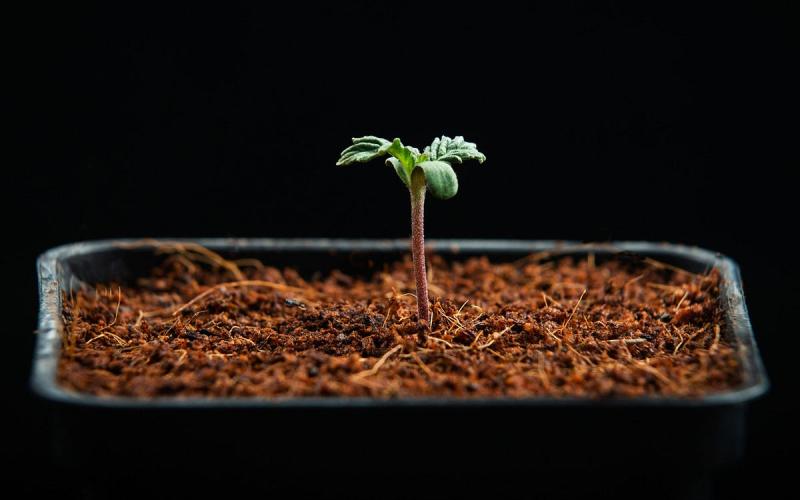Selecting the right growing medium is crucial for successful plant cultivation, whether in home gardening, commercial agriculture, or hydroponic systems. A growing medium refers to the material in which plants grow, providing the necessary support, moisture retention, and nutrient availability. The choice of medium affects root development, water retention, and nutrient delivery, ultimately influencing plant health and yield. This article explores different types of growing mediums, their properties, and applications, offering detailed insights into their role in modern agriculture and horticulture.
Key Characteristics of Growing Medium for Different Plant Types
Growing Medium serve as the foundation for plant root systems. The ideal qualities often depend on the specific plant species and cultivation method. Typically, a good growing medium must offer proper aeration, drainage, moisture retention, and nutrient content. Organic mediums like peat moss and coco coir are valued for their natural nutrient content and water-holding capacity, while inorganic mediums such as perlite, vermiculite, and rockwool excel in providing aeration and stability without decomposing over time. For hydroponic gardens, inert media that do not alter pH levels or nutrient composition are often preferred. Understanding these characteristics helps growers select the medium best suited for their specific needs.
Hydroponic Growing Media Emerging as a Preferred Choice Globally
Hydroponic systems, which grow plants without soil, rely heavily on specialized growing media to support roots and manage water and nutrient delivery. Common hydroponic media include rockwool, expanded clay pellets, perlite, and coconut coir. Rockwool offers excellent water retention and aeration but requires careful pH management. Expanded clay pellets, light and reusable, maintain good aeration but have limited water retention. Coconut coir is gaining popularity as an eco-friendly alternative due to its renewable source and balanced water retention and aeration properties. The growth of hydroponic farming, driven by urban agriculture trends and the need for efficient water use, is catalyzing the demand for these specific growing mediums worldwide.
Commercial Applications and Market Trends in Growing Medium Usage
The commercial horticulture and agricultural sectors depend heavily on tailored growing media to optimize plant growth in greenhouses, nurseries, and vertical farms. Innovations in media composition, such as blends of organic and inorganic materials, are helping maximize crop yield, control pathogens, and reduce environmental impact. Products like peat-based mixes are often enriched with fertilizers and amendments to enhance performance. The integration of technology in monitoring moisture and nutrient levels is also pushing the development of smart growing media with improved efficiency. Market trends indicate a surge in demand for biodegradable and sustainable growing media as environmental regulations tighten and consumer preferences shift toward eco-conscious products.
Navigating In-depth Reports on Global Growing Media Market Trends
For businesses and stakeholders looking to expand or optimize their operations in the plant cultivation sector, detailed market intelligence on growing medium dynamics is essential. The latest industry research delves into regional demand variations, technological advancements, competitor strategies, and regulatory frameworks affecting the growing medium landscape. These comprehensive analyses highlight key growth factors, market segmentation by product type, application, and geographic region, supporting strategic decision-making. Companies can leverage this granular data to identify emerging opportunities, understand supply chain challenges, and forecast future market conditions.
Impact of Sustainable Growing Media on Environmental Conservation
Sustainability in agriculture is influencing the development and adoption of eco-friendly growing medias. The growing concern over peat extraction’s environmental impact has accelerated research into alternative materials such as coir, rice hulls, composted bark, and other renewable resources. These sustainable products reduce carbon footprint and improve soil health when used in combination with soil or in soilless systems. Moreover, biodegradable growing media contribute to waste reduction in horticulture and offer safe end-of-life options through composting. Incorporating sustainability into growing media development aligns with global efforts to promote green farming practices and mitigate climate change effects.
Exploring Transactional Aspects of Growing Media Procurement
Procurement of growing media involves understanding vendor capabilities, product specifications, and supply chain logistics. Buyers from commercial farms, nurseries, and retailers prioritize products that guarantee consistent quality, appropriate particle size, pH balance, and nutrient availability. Additionally, packaging formats and ease of transport are critical factors affecting purchase decisions. In markets where rapid urbanization and population growth drive higher demand for fresh produce, timely availability and cost-efficiency of growing media are pivotal. Strategic sourcing and supplier evaluation are critical components to ensure a steady supply of high-grade media tailored to diverse cultivation requirements.
Commercial Advantages of Specialized Growing Medium for Crop Yield Optimization
Investing in specialized growing media tailored to specific crop needs can deliver substantial commercial benefits. These include enhanced root development, increased resistance to diseases, improved water efficiency, and superior nutrient uptake leading to higher crop yields and better quality produce. Specialty blends are engineered to address challenges like salinity, pH imbalance, and water retention in varying climatic conditions. For commercial growers focusing on high-value crops like berries, herbs, and ornamental plants, the adoption of premium growing mediums translates into economic advantages by reducing plant stress and minimizing crop losses.
---
growing mediums play an integral role in modern agriculture and horticulture by enhancing plant growth conditions across varied environments. From traditional soil-based cultivation to sophisticated hydroponic systems, selecting the appropriate medium directly impacts plant health and productivity. Emerging trends highlight a shift towards sustainability and technological integration, reflecting the evolving demands of growers worldwide. Detailed market intelligence resources provide valuable insights to navigate this dynamic sector strategically, empowering stakeholders to capitalize on advancing opportunities within the growing medium landscape.
Get this Report in Japanese Language: 成長培地
Get this Report in Korean Language: 재배 매체
Read More Articles Related to this Industry
Recent developments in Anti Venom Industry
About Author:
Money Singh is a seasoned content writer with over four years of experience in the market research sector. Her expertise spans various industries, including food and beverages, biotechnology, chemical and materials, defense and aerospace, consumer goods, etc. (https://www.linkedin.com/in/money-singh-590844163)
